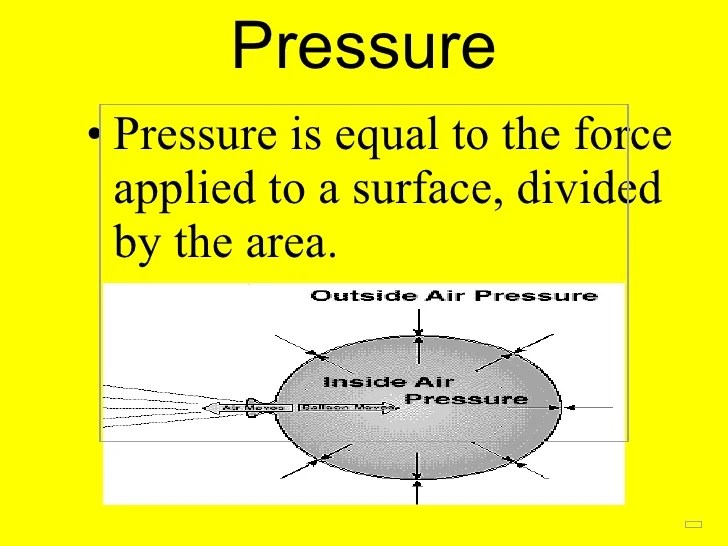Featured
Pressure Is Equal To Force Divided By Area
Pressure Is Equal To Force Divided By Area. Why is pressure force divided by area? The ability of a material to react to compressive stress or pressure is called compressibility.

So for a given force if you decrease the area by a factor of two, then the pressure would increase by a factor of two. What is the relation between pressure and force? The shear stress is equal to the force divided by the area of the face parallel to the direction in which the force acts, as shown in figure 1(c) above.
Pressure Is Measured In Units Of Pascals, And To Find The Pressure Exerted On A Surface, Simply Divide The.
So for a given force if you decrease the area by a factor of two, then the pressure would increase by a factor of two. P = f / a. Pressure is force divided by area, so the greater the area the less the pressure for a given force how can you calculate force from pressure and area?
Force (Lbs) = Pressure (Psi) X.
Why is pressure force divided by area? If you use a larger area, you are spreading out the force, and the pressure (or force per unit area) becomes smaller. Let's say that i were to apply with a pressure in equal to 10 pascals.
For Example, The Pressure Exerted By A Fluid Is Equal To The Force Of The Fluid Divided By The Area Over Which The Force Is Applied.
Pressure is equal to the force divided by the area on which it acts. Ok, that's just a number, so think of it this way: Because all the force is focused on that small area.
445 Gauge Pressure (Also Spelled Gage Pressure) Is The Pressure Relative To The Ambient Pressure.
The area it is pressing down on is the surface area of a. Pressure is defined as force divided by area: We will now consider how this works in practice.
That Means That 14.7 Pounds Of Force Are.
The formula used by this calculator to calculate the pressure from force and area is: Since pressure is defined as force divided by area, the force of the atmosphere can be found by multiplying pressure by area. Which force would you use to determine the pressure at the bottom of layer 2?
Comments
Post a Comment